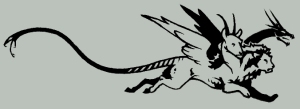So. Today is the hundredth day post-transplant. We haven’t been paying much attention to the calendar and counting of days that used to govern everything, but this one I noticed. It seemed like a good day for a status report.
Day 100 is traditionally seen as the cutoff between a diagnosis of acute graft-vs-host disease (GVHD) and the chronic variety, or ongoing issues with GVHD that are usually less severe. Brad’s GVHD is greatly improved from its harshest manifestations of a couple of months ago, but he does have some ongoing issues, including stomach pain when he eats. The good news there is that he’s eating, and even having some solid food—the other day I arrived at lunchtime to find that he’d had half a grilled ham and cheese sandwich. That represents a big advance. He remains on IV nutrition, but the doctors have adjusted it so that he only receives it at night—and thus he is able to be disconnected from the IV completely during the day. They’ve also shifted all his (considerable number of!) medications to oral versions. That has been great, and enables us to take him out for walks untethered—a huge sense of freedom after three months tied to a an IV pole. It’s turned warm here, and he likes to go over to the shady and relatively quiet breezeway in between the buildings of the Cancer Center, across the street from the hospital.
His vision continues to be a problem and the tarsorrhaphy (in which his eyes were sutured shut) is still in place, and likely to remain so for some time. The next-step treatment, autologous serum tears made from his own blood (so they mimic his natural tears precisely) is now underway—it’s a lengthy process to make the tears and then quarantine them, however. We expect to get them in 3-4 weeks and are hopeful they will speed healing of the corneas along. For now, however, he functionally has no vision, though when the eye doctors open the tarsorrhaphy he is noticing slightly improved peripheral vision.
Speaking of a timeline of 3-4 weeks, we are also getting some indications that the medical team may be ready to send him home within that timeframe. That, of course, depends on continued improvement. But, with a view to him eventually being at home, the medical team is getting him some more physical therapy to increase his strength and ability to handle the challenges of being home, as well as occupational therapy and other services to help him cope with his functional blindness. With the help of some friends, I’m working on lining up reliable in-home care. While it all seems a bit daunting, we are very much looking forward to him being home at some point.
